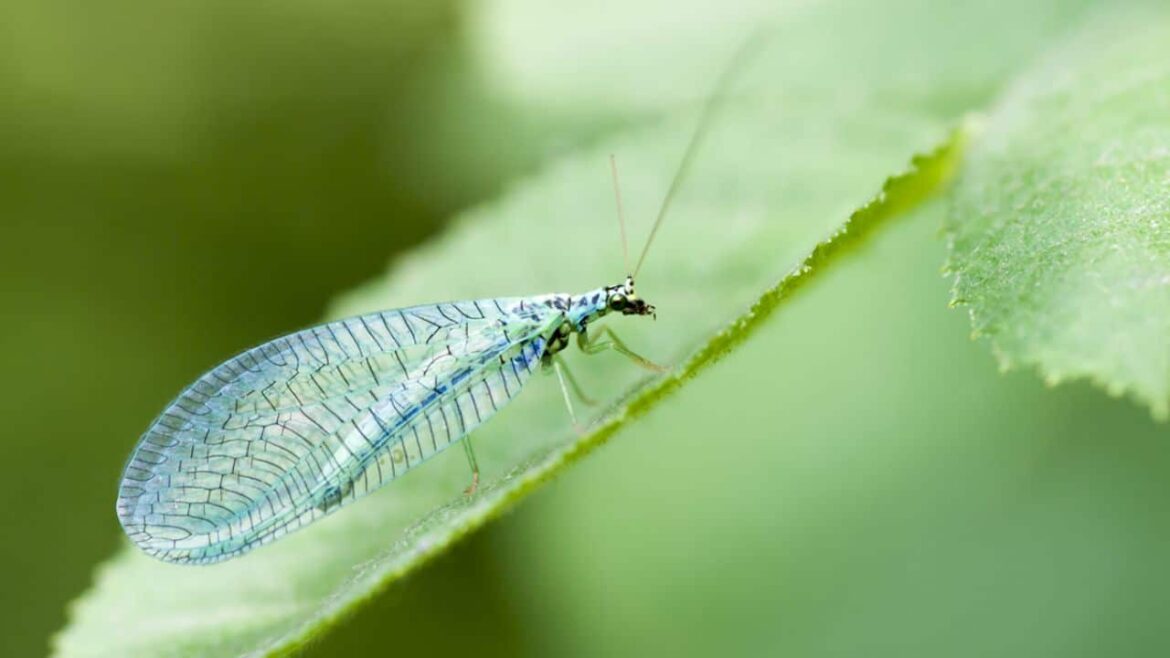1.4K
Whoever wants to overwinter lacewings indoors should bear in mind that they must provide the delicate insects with a suitable climate and food.
Why lacewings should overwinter indoors
It is a pity that lacewings are unknown to many. As soon as these delicate insects appear in the house, they are usually fought off. But it is worth protecting them, because they are perfect plant protectors. Their larvae eat aphids.
- The green to beige-yellow lacewings, about one to one and a half centimetres long, are slender, have long filigree antennae and often golden-yellow eyes – which also earns them the name golden eye. You can also recognise the lacewing by its delicate, gossamer and net-like wings.
- A lacewing lays up to 350 eggs – preferably on plants infested with aphids. There are usually two generations of offspring per year, sometimes up to three.
- The larvae of the delicate insects are also called “aphid lions”: They eat up to hundreds of aphids at a time. Strictly speaking, they impale the pests and suck them out. They also eat spider mite eggs and thrips.
- This is why it pays to encourage lacewing populations in the garden, which you can do, for example, by painting wooden overwintering boxes red, accumulating autumn leaves and planting nectar-rich autumn flowering plants.
- In order to increase the insects’ chances of survival in winter, you can also offer your garage, garden shed or house as an overwintering site. In spring, you can then release the little plant protectors quite early into the open air through open windows, as it were, to go to work.
- If you keep a population of lacewings in your house, your houseplants will also benefit from the pest-eating insects.
This is how lacewing survival works in the house
If you find lacewings behind your curtain or a picture frame in winter or late autumn, for example, here’s what you can do:
- Just let the animal overwinter there undisturbed. If it is a cool place, the animal has deliberately chosen this spot. In spring, when the temperatures rise, make sure to ventilate well so that the awakened animal can return to the wild.
- If the lacewing is not in rigor mortis and the place where it was sitting is relatively warm, feed the animal. You can offer sugar or honey water, or pieces of fruit. Otherwise the adult insect would not survive.
- If you have just had an infestation of pests on your houseplants, you can try to put the lacewing on them afterwards. However, it should not be too warm or too dry in the room.
- Don’t expect too much from a single lacewing, though. If you only have one animal – female or male – in the house, it cannot reproduce.
- For single specimens, after “feeding” the lacewing, move it to a cooler room in the house. This can also be your attic. The animals can then hibernate there in their usual rigidity. Even then, don’t miss releasing them in the spring.
- You can also deliberately bring lacewing populations into your home. You can buy lacewing eggs in various forms in garden centres or on the internet. Then follow the instructions for use that come with them.
- Of course, unless you want to harm the lacewings, you should not spray insecticides in your flower beds or other places in the house.

